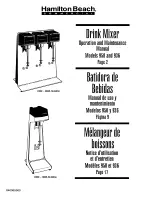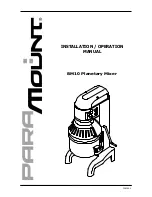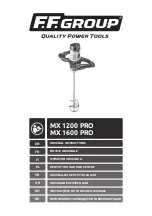
SIGNAL FLOW
INPUT SELECTION
The signal-flow through the BACKBONE is simple enough to describe and mostly follows the front
panel left-to-right layout. Three pairs of XLRs on the back panel are balanced line inputs associated
with the client’s sources. Typical sources might be a superb DAC (or two) or an analog tape machine.
Next come a pair of XLRs that are direct outputs of the chosen input. Typically these outputs would
feed a pair of monitor control box inputs and are used for comparing the raw tracks that were brought
in versus the processed signal. Mastering engineers may use this as a “confidence check” and as an im-
mediate way to show the client the “before and after pictures”. There are other outputs that can be used
to check the final output after processors, and for a mid-point in the processor chain if desired.
The chosen input’s Left and Right channels can be swapped just for those occasional sessions when
either the mixing studio accidentally swapped cables or the mix seems to sound better in the opposite
perspective. Absolute polarity can also be reversed. This reverses the “phase” (polarity is the cor-
rect term) of both the left and right channels. Usually one wants the kick drum pushing the speaker
out rather than sucking the speaker inward. Most of the time, “Polarity Reverse” is a subtle effect and
with some mixes the effect is inaudible. Strangely, the effect is often most pronounced on reed instru-
ments and some types of vocal character. It is usually worth a quick check to verify which way seems
to sound best and/or seems to have the kick pushing the woofer outward. If in doubt, leave the absolute
polarity alone.
The Input Selection, Left-Right Reverse and Polarity Reverse are accomplished purely passively,
and are highly unlikely to damage the signals at all. This is achieved with simple sealed gold-contact
relay closures. In fact, the Left channel and Right channel signal paths are mainly kept on separate
circuit boards and/or widely separated physically to maintain maximum channel separation and low
cross-talk. Where a signal meets a connector, two gold contact pins and two wires are used for extreme
reliability. That feature is called “redundancy” so that if one expects one failure in one thousand with
only one connector, one might expect one failure in a million with doubled contacts (1,000 X 1,000).
INPUT LEVEL SWITCHES
Next up are the two INPUT LEVEL rotary switches that provide 24 precise ½ dB gain steps. The
range is from 6 dB of boost to -5.5 dB of attenuation. We select ultra-low distortion thin film 0.1% tol-
erance resistors and sealed gold contact Greyhill switches for near perfect tolerence and matching. As
described earlier, the gain stage is a fully balanced circuit followed by a pair of unity gain high current
buffers. “Nearly inaudible” is the goal here.
There is a GAINS switch that engages active electronics for both the INPUT LEVEL and OUTPUT
LEVEL control circuits. This is one more form of confidence check that allows you to compare whether
two sets of gain stages have any audible footprint, whether detrimental or beneficial. It also allows one
to run the console in a 100% passive mode.
6







































